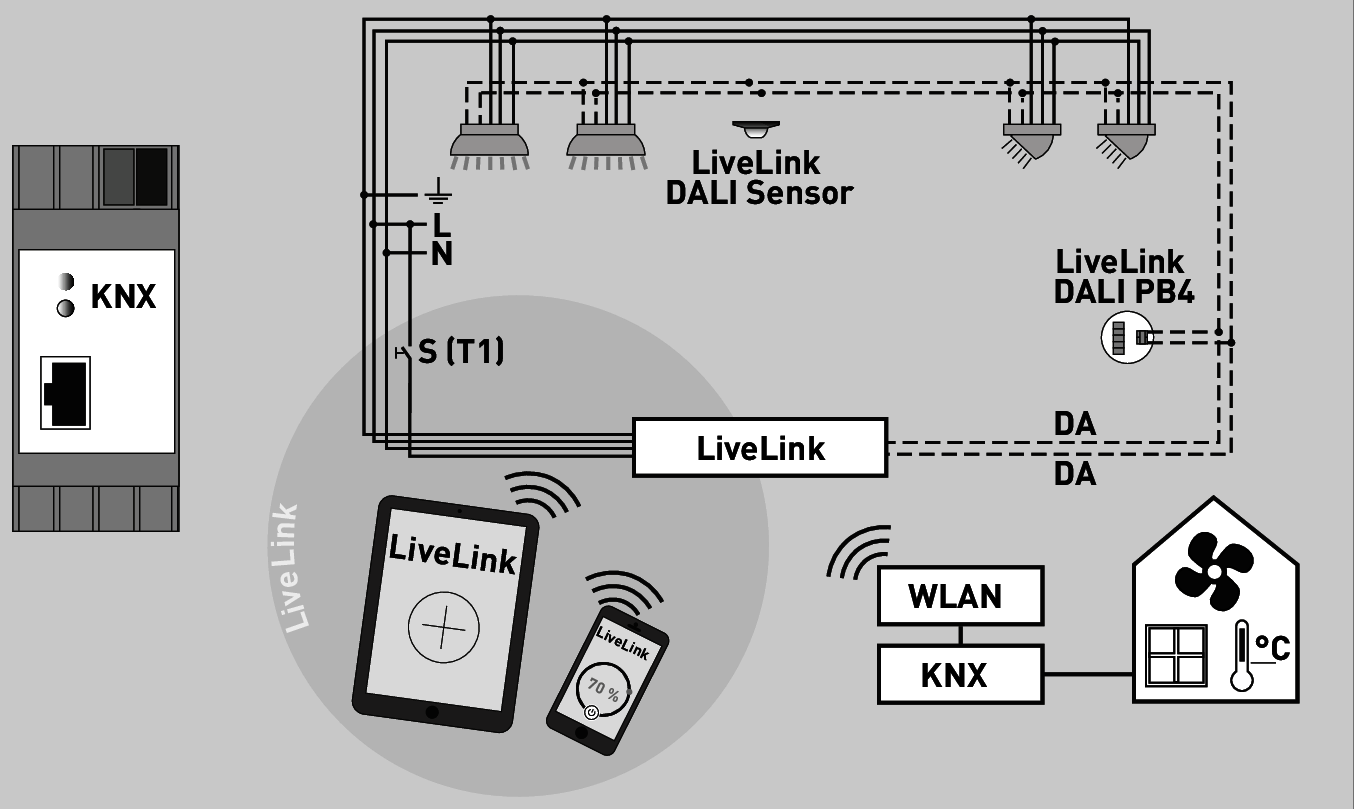The additional aspect of energy savings requires presence detection and light regulation functions in areas of the building that need to be defined. Information regarding the definition of these areas and their “reference technologies” can be found in the applicable version of EnEV (German energy savings regulation) as well as DIN V 18599 (see section ).
Presence and daylight-dependent lighting control require sensors as well as processing of the information they capture. One possibility is the use of sensors in combination with a building management system interface. Data capture is achieved via the BMS bus line. Programming of functions is achieved via the corresponding software (e.g. ETS for KNX systems, see above). The setting of control and regulation functions (see section and section ) is up to the building management system administrator in this case.
One alternative to this are self-contained light management systems with a BMS interface (e.g. KNX, see figure). They fulfil automatic control functions at a local level. The data traffic necessary for light regulation is routed exclusively through the light management system interfaces (e.g. DALI) and does not burden the BMS bus line.
All functions available in the light management system are available without additional programming effort. The commissioning of these functions is done locally. Monitoring functions of the lighting interface, e.g. status scans (see section ) can be performed by the BMS as required.
